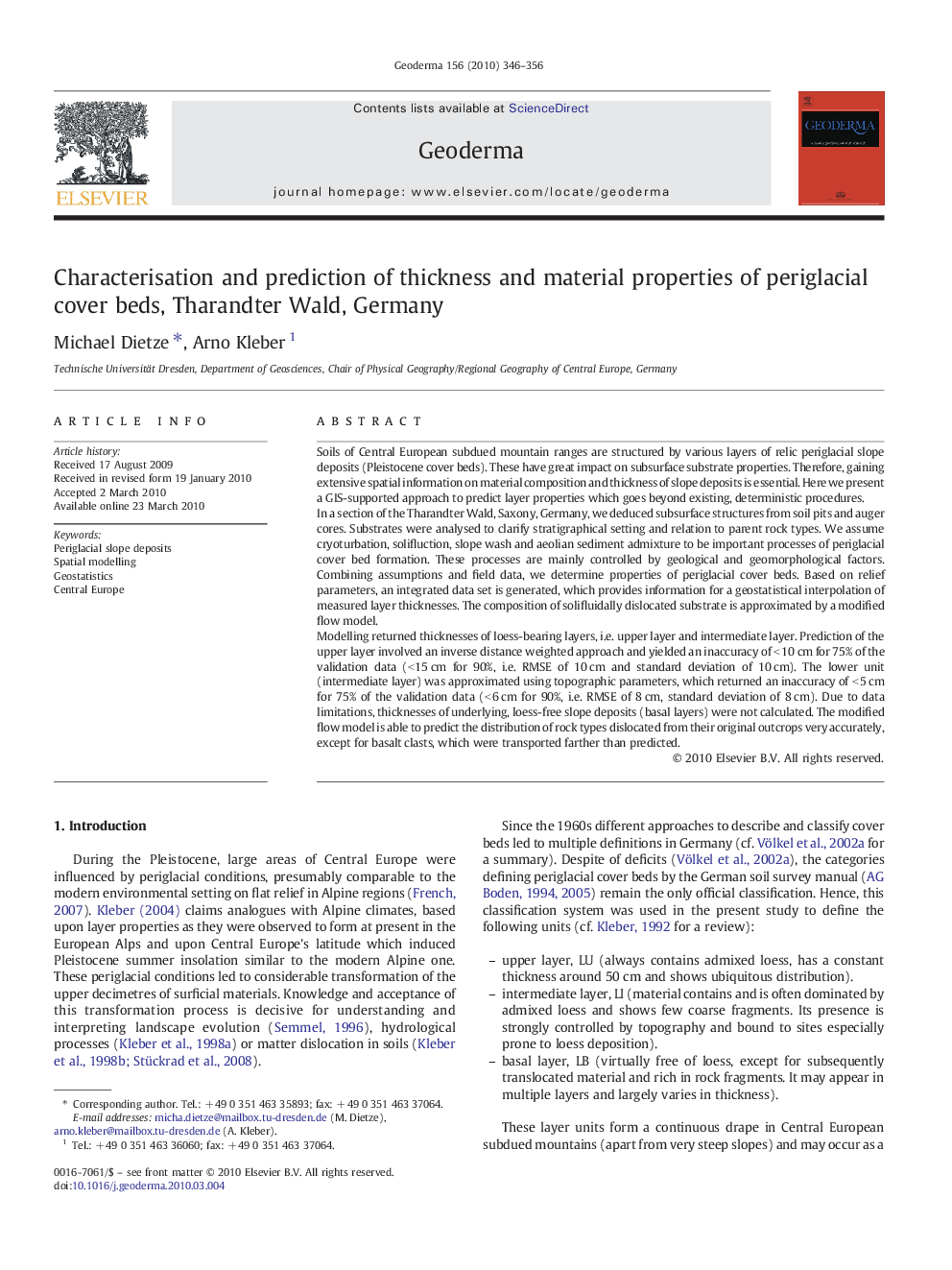| کد مقاله | کد نشریه | سال انتشار | مقاله انگلیسی | نسخه تمام متن |
|---|---|---|---|---|
| 4574477 | 1629521 | 2010 | 11 صفحه PDF | دانلود رایگان |

Soils of Central European subdued mountain ranges are structured by various layers of relic periglacial slope deposits (Pleistocene cover beds). These have great impact on subsurface substrate properties. Therefore, gaining extensive spatial information on material composition and thickness of slope deposits is essential. Here we present a GIS-supported approach to predict layer properties which goes beyond existing, deterministic procedures.In a section of the Tharandter Wald, Saxony, Germany, we deduced subsurface structures from soil pits and auger cores. Substrates were analysed to clarify stratigraphical setting and relation to parent rock types. We assume cryoturbation, solifluction, slope wash and aeolian sediment admixture to be important processes of periglacial cover bed formation. These processes are mainly controlled by geological and geomorphological factors. Combining assumptions and field data, we determine properties of periglacial cover beds. Based on relief parameters, an integrated data set is generated, which provides information for a geostatistical interpolation of measured layer thicknesses. The composition of solifluidally dislocated substrate is approximated by a modified flow model.Modelling returned thicknesses of loess-bearing layers, i.e. upper layer and intermediate layer. Prediction of the upper layer involved an inverse distance weighted approach and yielded an inaccuracy of < 10 cm for 75% of the validation data (< 15 cm for 90%, i.e. RMSE of 10 cm and standard deviation of 10 cm). The lower unit (intermediate layer) was approximated using topographic parameters, which returned an inaccuracy of < 5 cm for 75% of the validation data (< 6 cm for 90%, i.e. RMSE of 8 cm, standard deviation of 8 cm). Due to data limitations, thicknesses of underlying, loess-free slope deposits (basal layers) were not calculated. The modified flow model is able to predict the distribution of rock types dislocated from their original outcrops very accurately, except for basalt clasts, which were transported farther than predicted.
Journal: Geoderma - Volume 156, Issues 3–4, 15 May 2010, Pages 346–356